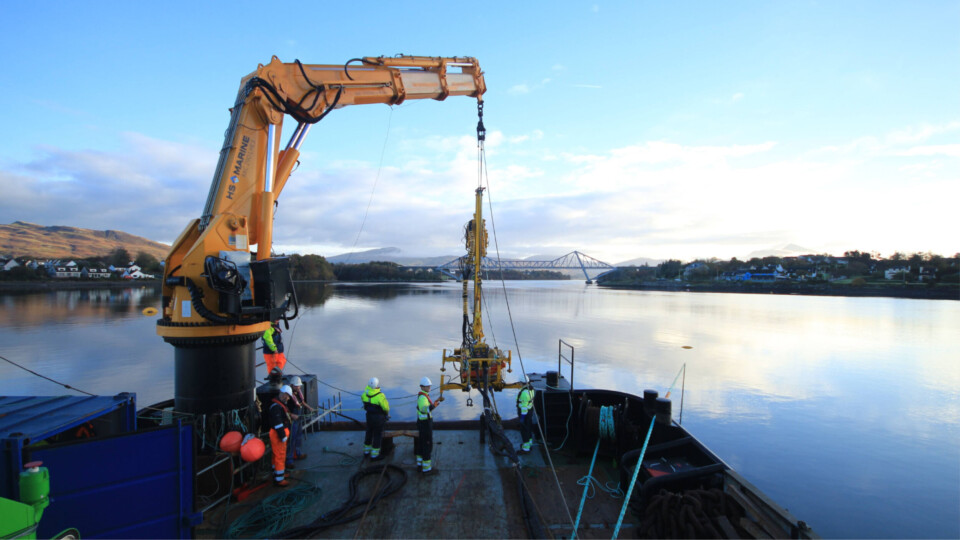
Rock stars get firmer grip on next-gen fish farm anchors
A consortium of researchers has taken a significant step forward in adapting anchoring technology used in marine energy sites for use in salmon farming.
Tidal energy technology specialist Sustainable Marine Energy Ltd (SME); the University of Dundee; marine equipment supplier, Gael Force Group; and the Scottish Aquaculture Innovation Centre (SAIC) have been working on the idea for a year.
With additional support from software provider Optum, the initial testing phase has been successfully completed and the results will allow the group to accurately predict the loads and capacity that rock anchors can bear in field trials, SAIC said in a press release.
Mechanical ground lock
The findings will also enable SME to reduce the amount of material required to manufacture the anchors, leading to a more cost-effective and environmentally friendly product.
The new technology could support the deployment of aquaculture sites in more remote, higher energy locations. The anchor forms a mechanical ground lock with the rock seabed without the need for resin or grout, and the reduction in weight also allows operators to use modestly sized, readily available vessels for deployment.
The group is now looking for an aquaculture partner to trial the new anchors at a fish farm, progressing towards a full-scale deployment.

Adam Caton, geotechnical engineer at Sustainable Marine Energy, said: “To date, the project has been a tremendous success, allowing us to create a more cost-effective anchoring technology that will benefit the aquaculture sector.
“Each partner has played a pivotal role in getting us to this point – from Dundee’s analysis of anchor behaviour, to Gael Force’s input on typical fish farm mooring loads – allowing us to create a more efficient and innovative design.
“These anchors have the potential to allow expansion of aquaculture to previously inaccessible sites with scope for large farms in energetic areas. This will bring benefits in terms of fish fitness and waste dispersal.
“This is a new sector for us and a market in which we are extremely interested. The next stage is to trial the technology at a fish farm alongside continued lab testing, to take another step forward in bringing the product to market.”

‘Pushed the envelope’
Dr Michael Brown from the University of Dundee’s Geotechnical Engineering research group said the project had pushed researchers to explore the use of novel numerical simulation techniques to capture the complex behaviour associated with different rock types, and distil this into practical approaches for cost-effective anchor design.
“Although rock anchors have been used for many years for classic civil engineering applications, they are often heavily over-designed and rely on grouting to bond to the rock mass,” said Brown.
“This new anchor technology is designed to be much simpler and without the need for separate grouting operations. This has resulted in the need to develop new approaches to anchor design, which we think has pushed the envelope of current rock anchor understanding.”
Knowledge sharing
SAIC chief executive Heather Jones said: “Having an alternative way of deploying sites in higher energy water could play an important role in the sector’s sustainable growth over the next decade.
“It builds on many of our previous projects around fish wellbeing and it is particularly pleasing to bring skills from another key area of the Scottish economy into aquaculture, underlining the potential for cross-sector collaboration and knowledge sharing.”






















































